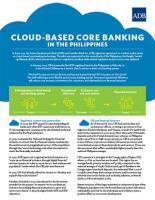Can Southeast Asian Countries Sustainably Continue Their LNG Development?

Energy Economist, Economic Research Institute for ASEAN and East Asia (ERIA)

LNG imports to ASEAN countries have surged from almost zero in 2010 to 0.5 million tonnes per annum (mtpa) in 2011 and to 12 mtpa in 2020. Photo credit: iStock/Suphanat Khumsap.
Investing in downstream LNG infrastructure is not a step back from the region's ambitious climate goals as long as governments continue adopting clean energy technologies.
This article is published in collaboration with the Economic Research Institute for ASEAN and East Asia.
Since about 2010, Southeast Asian countries have built various downstream liquified natural gas (LNG) facilities including receiving ports and terminals, storage facilities, and regasification terminals, including floating units. According to Global Data Oil & Gas Intelligence Centre, LNG imports to ASEAN countries have surged from almost zero in 2010 to 0.5 million tonnes per annum (mtpa) in 2011 and to 12 mtpa in 2020.
The upward trend should continue until at least 2040, driven by two main factors. First, Southeast Asian countries need to diversify their energy sources to generate power. Natural gas is a relatively clean fuel, emitting only half the amount of carbon dioxide compared with coal when used in power plants. It has, therefore, been considered a viable energy resource in energy transition, allowing emerging economies to reduce carbon intensity while keeping power and energy prices affordable. Second, the countries are aware that their domestic natural gas resources are depleting.
LNG infrastructure
In the Philippines, regulatory support for LNG infrastructure stems from the declining supply of the Malampaya field. A 2021 report by the Economic Research Institute for ASEAN and East Asia (ERIA) estimates that almost 25 mtpa of capacity from new LNG terminals, storage, and regasification facilities, including floating units, should enter commercial operation in the Philippines by the end of this year. The same report says that Viet Nam plans to build three or four LNG terminals from 2021 to 2025, each with an estimated capacity of 1–3 mtpa. In 2026–2035, the country plans to build five or six LNG terminals, each with an estimated 3 mtpa.
Indonesia, self-sufficient in natural gas, embraces the gas-to-power transition. In 2022, Indonesia’s Minister of Energy and Mineral Resources tasked Pertamina, the state oil and gas company, to supply LNG to 33 small-scale gas-fired power plants across the country, especially the eastern region, which needs the support of LNG bunkering and shipping facilities.
However, global efforts to combat climate change has led to underinvestment in natural gas and oil exploration since 2015. This triggered a continuous increase in natural gas prices that finally peaked from late February to early September 2022, mainly due to the impacts of the Russian invasion of Ukraine and uneven post–COVID-19 recovery.
Although the LNG spot price in Asia stands at $9 per million British thermal units (mmBtu)—marking a more than 85% drop from its peak of more than $70 mmBtu in August 2022—the damaging effects are evident.
Price volatility has tarnished LNG’s reliability and affordability, making it relatively fiscally unsustainable, as securing LNG imports has become extremely difficult, especially during the steep price spikes in 2022. Several gas-to-power and LNG import facilities projects in the Philippines and Viet Nam were delayed, while several proposed gas-fired power projects faced the risk of cancellation. The delay in gas-fired power plant projects caused power outages in several cities in Viet Nam, including Ha Noi.
The role of natural gas in decarbonization
A 2022 study by ERIA and the Institute of Energy Economy Japan, examined ASEAN’s decarbonization, highlighting the role of natural gas in reducing greenhouse gas emissions. The study foresees that natural gas will play a crucial part not only during the initial stage of the clean energy transition (2020–2030), where it serves as a flexible baseload that allows the penetration of renewable electricity, but also in the longer term (2030–2050), when more advanced technologies such as carbon capture, utilization, and storage as well as cofiring with hydrogen in power generation will be deployed.
So the question is: how can Southeast Asian countries sustain LNG infrastructure development plans while minimizing the risks of price volatility?
First, leverage the European Commission’s plan, announced in December 2021, to ban long-term contracts for unabated natural gas after 2049.
Gas-exporting countries should seek new and alternative markets in Asia that have the most potential for demand growth. Through the Association of Southeast Asia Nations (ASEAN) or its concerned body such as the ASEAN Council on Petroleum (ASCOPE), the countries should intensify dialogue with gas-producing countries and organizations such as the Gas Exporting Countries Forum to prepare for the new long-term contract framework that will benefit both.
Second, Southeast Asian countries should intensify regional discussions to formulate measures that can effectively mitigate excessive price volatility in the future. The discussions should aim at creating contingency plans to avoid situations like the 2022 crisis, where Southeast Asian LNG cargo was diverted to advanced economies, risking LNG security within the region during price spikes.
Exporting countries in Southeast Asia, such as Malaysia, Indonesia, and Brunei Darussalam, that have some contractual freedom over destinations, must take the initiative to optimize the operation of their LNG vessels and terminals and ports within the region.
Third, Southeast Asian countries, through ASEAN, must actively promote a universally accessible, real-time information platform for natural gas trade. ASEAN must engage in discussions with the international institutions and bodies that hold gas market and trade data, while cooperating with economic groups such as the Group of Seven (G7) and/or Group of Twenty (G20) to initiate the creation of a real-time information platform that is accessible to all countries and market players. This platform will significantly increase the transparency and accessibility of the gas market, which will discourage dishonest market practices and unfair imbalances in the gas market.
Fourth, international institutions in Southeast Asia or across Asia should issue statements that can help create a more stable gas market. For example, the European Union, on 2 February 2022, designated natural gas as a sustainable source of energy. Southeast Asian countries should also reverse negative perceptions of natural gas and encourage investors, financiers, and countries to restart investing in upstream and midstream gas infrastructure. The statements might have short- and long-term impacts on improving sentiments and can stabilize gas markets by instilling confidence and providing security to investors.
Finally, Southeast Asian governments must send clear signal regarding the need for new gas investments. The governments must adopt sound and long-term policies that include transitional finance. Negating fossil fuel investment in response to climate change concerns could prolong the current energy crisis, erode economic growth, and hamper public support to climate actions.
Investment in at least downstream LNG infrastructure is not a step back from the ambitious climate objectives of Southeast Asian countries as long as they continue investing in clean energy technologies through more cooperative and inclusive international efforts.
This opinion piece has been published on The Jakarta Post and The Manila Times.

Alloysius Joko Purwanto
Energy Economist, Economic Research Institute for ASEAN and East Asia (ERIA)Alloysius Joko Purwanto obtained his doctorate degree in Economic Sciences from Université Lyon II in France. After his studies, he joined the European Commission's Joint Research Centre in Seville, Spain for 3 years as researcher. He then worked at the Transport & Mobility Leuven, a research company based in Belgium, where he stayed for almost 10 years as senior researcher.

ERIA (Economic Research Institute for ASEAN and East Asia)
ERIA is an international organization that was established in 2008 by an agreement of the leaders of 16 East Asia Summit (EAS) member countries. Its main role is to conduct research and policy analyses to facilitate ASEAN Economic Community (AEC) building and to support wider regional community building.


